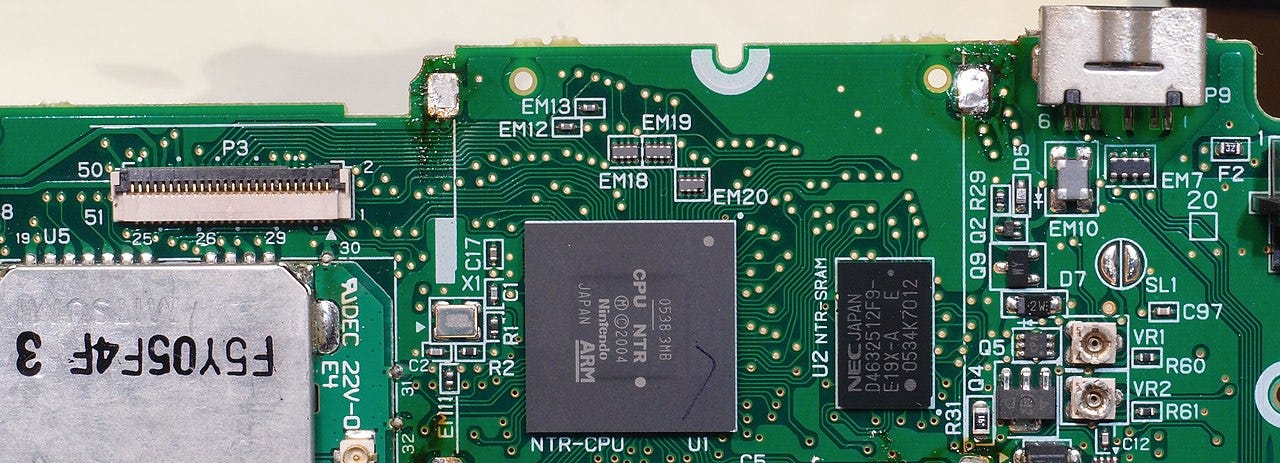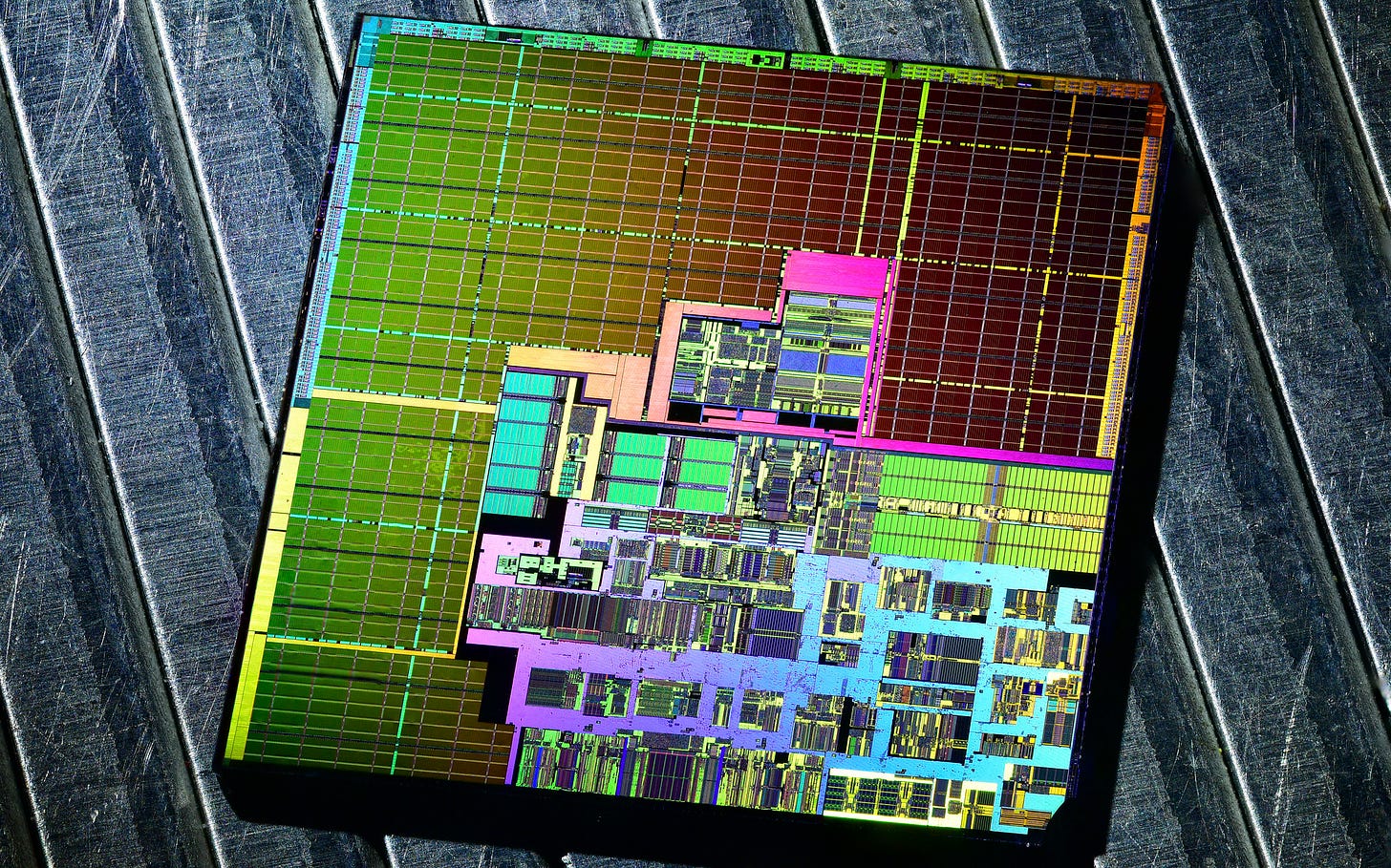Chip Letter Links No. 15 : Gordon Moore, Itanium, Inventing Ethernet, MIPS, RISC-V and more
Links, images and reading for 26 March 2023
Hi everyone and thanks for subscribing. This is one of a regular series of posts with links, images and articles of interest, inspired by Adam Tooze’s excellent Chartbook.
Each edition starts with a beautiful die image. This week it’s an Intel Itanium 2 courtesy of Martijn Boer.
The Chip Letter is 100% reader supported, so if you’d like to support us and get access to all of our content, then please consider taking out a paid subscription. Thanks to everyone who has taken out a paid subscription already!
Gordon Moore : 1929 - 2023

Gordon Moore passed away on March 24th, 2023 at the age of 94.
It’s impossible to summarise the impact of Moore’s life and work in a few sentences.
Like many, on hearing of Moore’s death, I was drawn to re-read the original ‘Moore’s Law’ paper from 1965. ‘Cramming More Components onto Integrated Circuits’ is still startling in its clarity, economy and presience:
Integrated circuits will lead to such wonders as home computers—or at least terminals connected to a central computer—automatic controls for automobiles, and per- sonal portable communications equipment.
This famous graph alone is worth thousands of words:
There is so much more to say about Moore’s life and work, but for now RIP Gordon Moore.
Emulating a PDP 11/40 running Unix v5/6 on a Raspberry PI Pico
A great project (and illustration of the impact of Moore’s Law) to emulate the DEC PDP-11/40 minicomputer (from 1973) on a Raspberry PI Pico.
I love the motivation from the documentation:
Well, this is an easy one: I’m a Bluetooth geek, and I’m also old enough to have spent many hours working on DEC PDP-11’s in college. And because I wanted to do it.
The PDP-11 would have cost around $80,000 in 2023 money. For comparison, the Pi PICO costs from $4.
And on the topic of the PDP-11, here is a great video exploring the full range of different PDP-11 models produced over the years.
Is Google the Xerox of the 2020s?
Right now it’s impossible to escape discussion of ChatGPT and the company behind it, OpenAI. One recent development has been the announcement of the intregration of ChatGPT with Wolfram | Alpha.
Which led to the following, intriguing, comment on Hacker News:
OpenAI is like Google before 2003, dazzling the world with amazing products backed by astonishing technologies that went beyond wild dreams of millions of people.
and then in response.
In terms of product innovation, OpenAI is now like Google and Google is now like Xerox.
Xerox, of course, owned Xerox Parc where Steve Jobs first saw the Graphical User Interface.
They just grabbed defeat from the greatest victory in the computer industry. Xerox could have owned the entire computer industry today.
From this chip with Steve Jobs talking about Xerox in 1995:
Is history repeating itself again? Well Xerox was never as successful as Google and I think that there are some important differences, but the comparison is certainly thought provoking.
Bob Metcalfe - Inventing Ethernet
Staying with Xerox Parc, Bob Metcalfe has been awarded the 2022 A. M. Turing Award. From the award announcement:
In 1973, while a computer scientist at the Xerox Palo Alto Research Center (PARC), Metcalfe circulated a now-famous memo describing a “broadcast communication network” for connecting some of the first personal computers, PARC’s Altos, within a building. The first Ethernet ran at 2.94 megabits per second, which was about 10,000 times faster than the terminal networks it would replace.
Given the huge and long-lasting impact of Ethernet, it’s an award that’s probably overdue.
Ethernet is now one of those technologies that we take for granted. It’s easy to forget that it was just one of a number of competing technologies developed at around the same time.
For a long and wide-ranging discussion with Metcalfe there is ‘A conversation between Bob Metcalfe and Stephen Wolfram at the Wolfram Summer School 2022’.
Stephen Wolfram is a skilled interviewer who knows his stuff on these topics, so it’s a great conversation.
For a more focused discussion with Metcalfe on his life and work there is an Oral history that lasts over six hours(!) in two parts on YouTube here and here and printed version here.
CPU of The Week - ARM7TDMI

As we’re in the middle of a series on the story of Arm it seemed appropriate to feature an Arm Core. The ARM7TDMI from 1994 is probably the most important core in Arm’s history (after the ARM 1!)
As we saw in The Arm Story Part 3, it was the ARM7TDMI that got Arm into Nokia’s GSM phones and set the stage for Arm’s dominance of application processors in cellphones.
But the ARM7TDMI didn’t just feature in mobile phones. It was used in Nintendo portable gaming devices (the GameBoy Advance and Nintendo DS), the Roomba and the Zune HD amongst others.

It was also used in the early iPod classics, so restarting Apple’s use of Arm cores after the Newton had been cancelled a few years earlier, and that probably led Apple to use Arm in the first iPhone.
Possible Reasons for 8-bit Bytes
It’s good to understand some of the assumptions that we take for granted every day. Here Julia Evans discusses reasons why we use 8-bit bytes. TLDR is that there are lots of reasons, including it being convenient to represent a single English character and two BCD digits. The Hacker News discussion is also entertaining.
This relates to our earlier post on 60-bit computing, with 60 being ten 6-bit bytes of course.
Will we ever move away from 8-bit bytes? Seems highly unlikely but we’re using bfloat16 as a truncated version of the 32-bit float format, so who knows.
Paid subscribers get links to a great video series explaining key aspects of computer architecture design using the MIPS Instruction Set Architecture and a tutorial on building an (almost) RISC-V compatible CPU using a Python-based ‘Hardware Description Language’.









